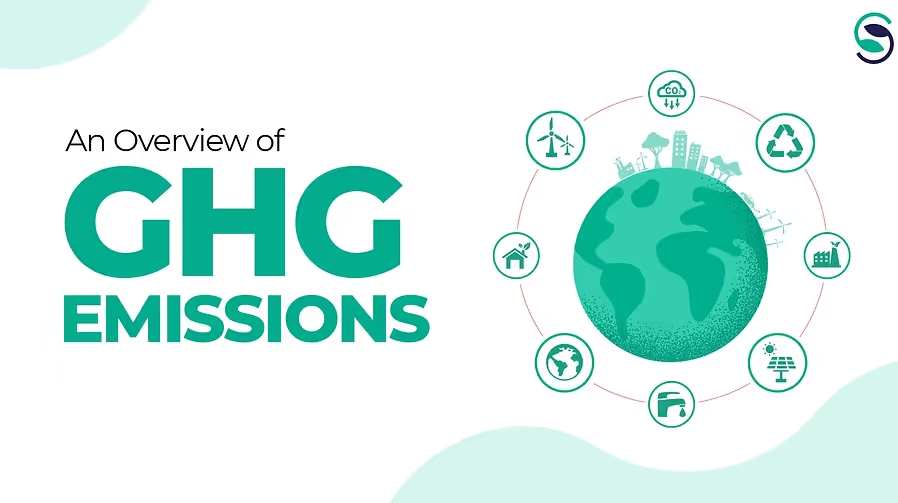
Solutions
Carbon Management
ESG Intelligence
Climate & Nature Risk
Data Registry
Beta
Sector
Get started, schedule a demo or request a free assessment!


Today, the term climate change is on everyone's lips. We hear about it in the news, we read about it in scientific journals, and we feel its effects in our own backyards. But what exactly is causing the climate to change?
The answer lies in a group of invisible, yet potent substances known as Greenhouse Gases (GHGs). These are naturally occurring as well as man-made gases that trap heat in the Earth's atmosphere. Greenhouse gases include carbon dioxide (CO2), methane (CH4), and nitrous oxide (N2O)
Human activities over the last 200+ years have disrupted the delicate balance of the Earth’s atmosphere. The burning of fossil fuels, deforestation, and industrial processes have released and continue to release vast quantities of GHGs into the atmosphere, trapping more heat and causing the Earth's temperature to rise, including rising sea levels, extreme weather events, and ecosystem disruptions.
Tracking greenhouse gas (GHG) emissions is crucial for understanding the impact of human activities on the climate and developing effective strategies to mitigate climate change. From identifying sectors and activities that contribute the most, identifying areas of improvement to develop reduction strategies, and empowering stakeholders to be transparent and make informed decisions.
Tracking GHG emissions will allow us to pinpoint the specific sectors and activities that contribute the most to climate change, and this information empowers policymakers, businesses, and individuals to direct their efforts toward reduction strategies and prioritizing actions to address specific sectors or activities.
Tracking and sharing GHG emissions data fosters transparency and collaboration among nations, businesses, and stakeholders, and in turn, encourages accountability, promotes knowledge sharing, and facilitates the development of innovative solutions to climate change.
By quantifying our emissions, we can also assess the effectiveness of mitigation strategies and identify areas that require improvement, and with accurate GHG emissions data, policymakers can design effective regulations, incentives, and investments to curb climate change.
Understanding GHG emissions empowers individuals, businesses, and governments to make informed decisions that align with climate goals. Your customers can make choices that minimize their carbon footprint, your organization can adopt sustainable practices, and governments can implement policies that promote clean energy and energy efficiency.
One way of tracking GHG Emissions is by using StepChange’s ESG software. Onboarding our comprehensive platform for data collection, analysis, and reporting, we will help your organization gain valuable insights into its environmental impact and identify areas for improvement. This information can then be used to develop and implement effective GHG reduction strategies for your internal operations, for your value chain, and even for your client portfolio. By effectively managing GHG emissions, your organization can contribute to the fight against climate change and strengthen its sustainability credentials.

.svg)